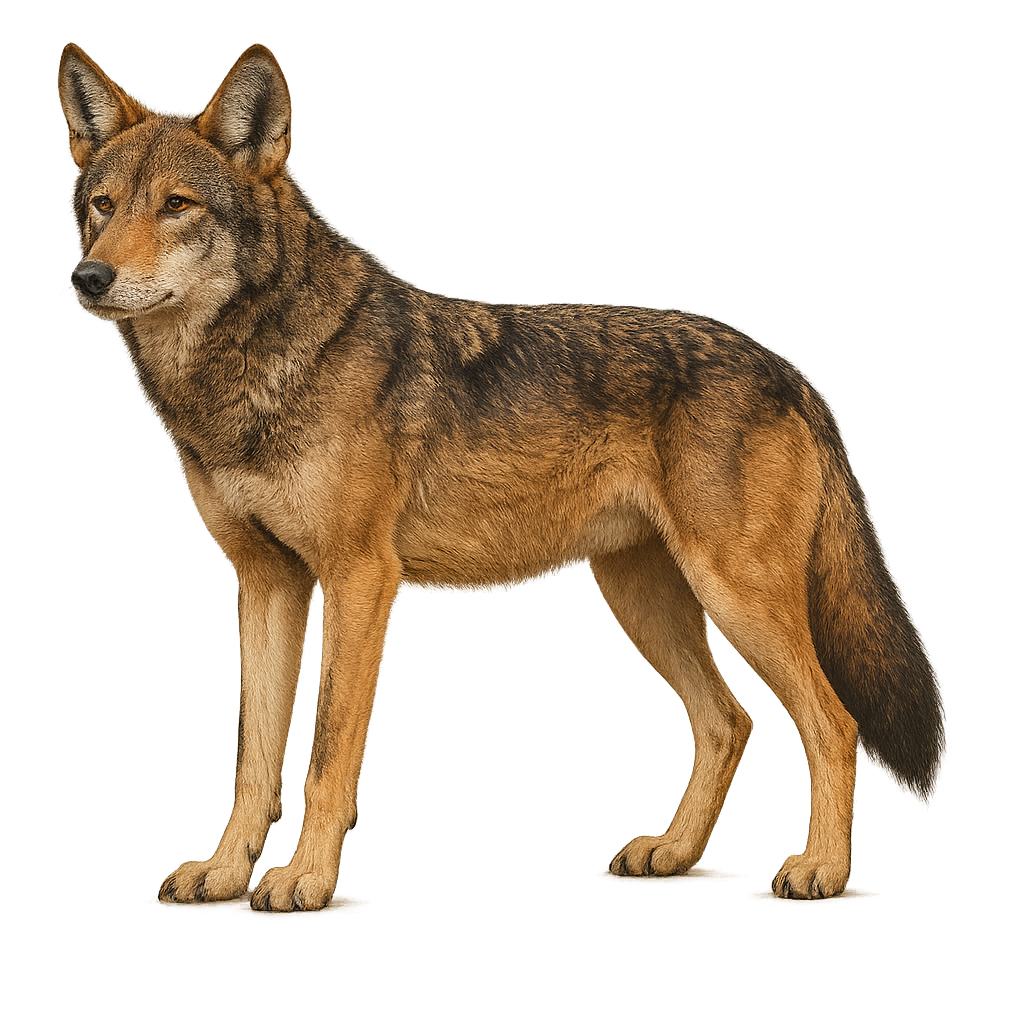Your wildlife photography guide.
Explore the red wolf in detail, study its behavior, prepare your shots.
Where to observe and photograph the red wolf in the wild
Learn where and when to spot the red wolf in the wild, how to identify the species based on distinctive features, and what natural environments it inhabits. The WildlifePhotographer app offers tailored photography tips that reflect the red wolf’s behavior, helping you capture better wildlife images. Explore the full species profile for key information including description, habitat, active periods, and approach techniques.
Red wolf
Scientific name: Canis rufus

IUCN Status: Endangered
Family: CANIDAE
Group: Mammals
Sensitivity to human approach: Shy
Minimum approach distance: 25 m
Rut period: January to February
Gestation: 60-63 jours
Births: March to April
Habitat:
Forests, marshes, grasslands
Activity period :
Active at dawn and dusk, ideal moments for observation.
Identification and description:
The red wolf, Canis rufus, is a medium-sized canid native to the United States. It is characterized by its reddish-brown coat, pointed ears, and bushy tail. Historically, it occupied a wide range of habitats, from coastal marshes to deciduous forests. However, habitat loss and excessive hunting have significantly reduced its population. Today, it is primarily confined to protected areas. The red wolf is an opportunistic predator, feeding on small mammals, birds, and occasionally deer. It lives in packs structured around an alpha pair. Conservation efforts aim to reintroduce this species into its natural habitat and raise public awareness of its ecological importance.
Recommended lens:
400mm – adjust based on distance, desired framing (portrait or habitat), and approach conditions.
Photography tips:
To photograph the red wolf, it is essential to remain discreet and patient. Use a telephoto lens of 400 mm or more to capture detailed images from a distance without disturbing the animal. Twilight hours are ideal for observing their activity. Focus on protected areas where red wolves are reintroduced. Be attentive to signs of their presence, such as tracks or howls. Stay still and silent to maximize your chances of seeing them.
The WildlifePhotographer App is coming soon!
Be the first to explore the best nature spots, track rutting seasons, log your observations, and observe more wildlife.
Already 1 439 wildlife lovers subscribed worldwide

